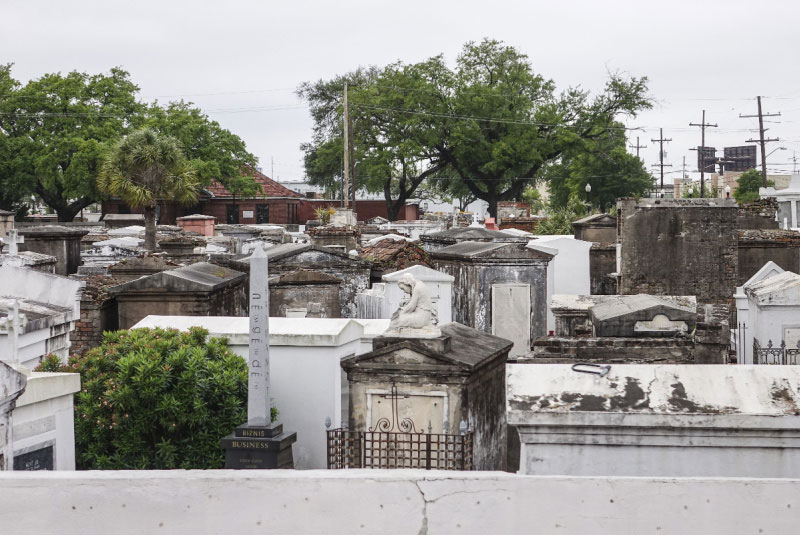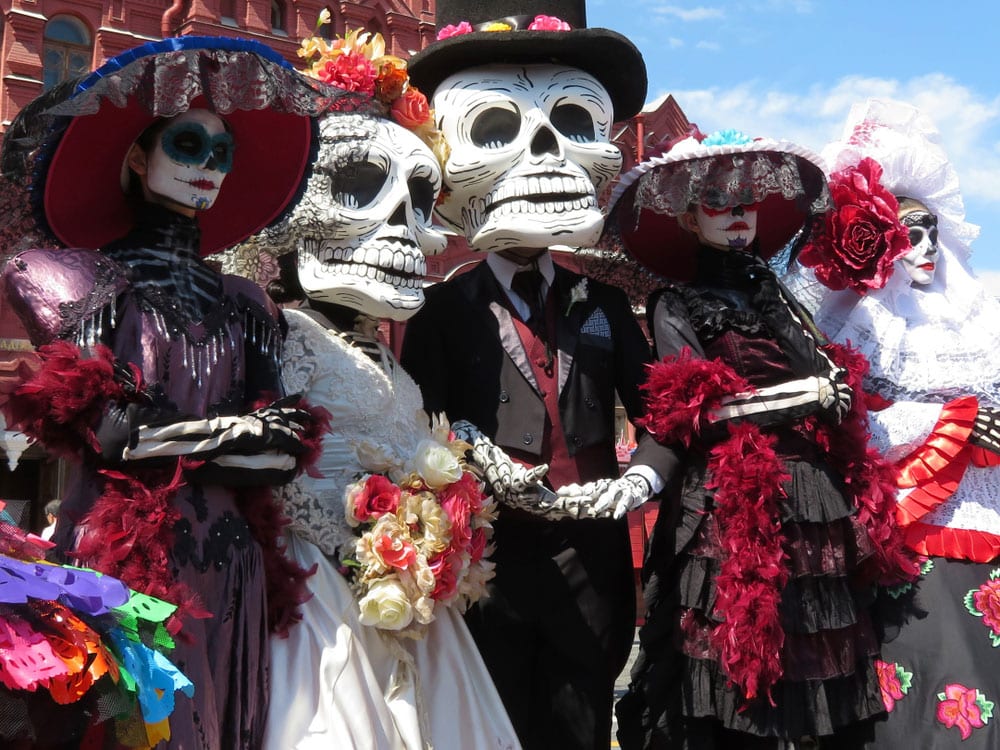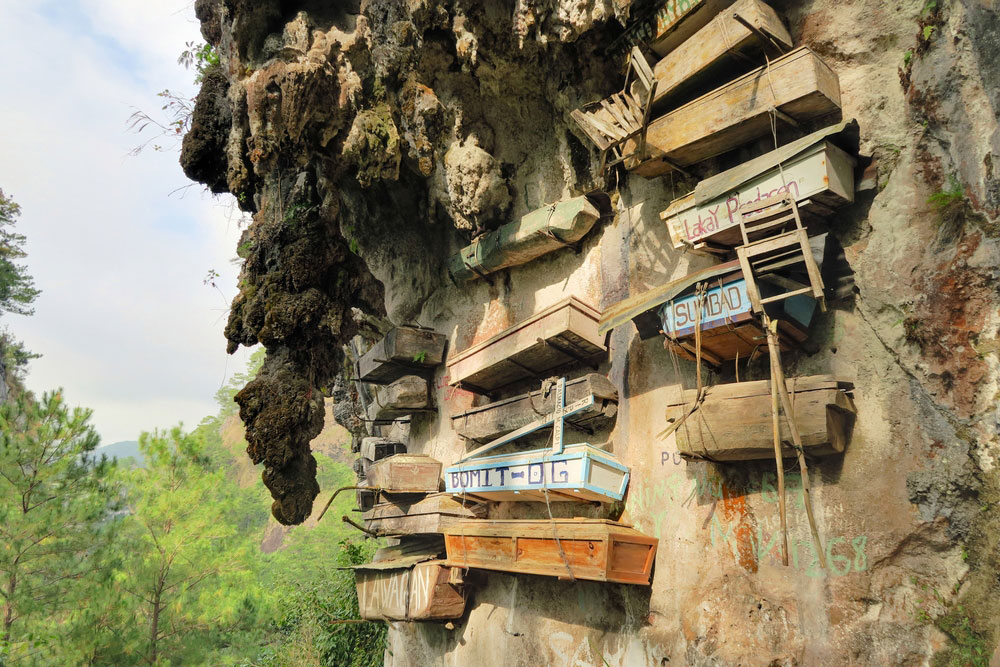
Global Goodbyes: Celebrating Life Through Funeral Traditions
Mourning and honoring the deceased is never one size fits all and the beauty in death is the unique variety of life celebrations and how people honor their deceased loved ones. From celebrations of life to ensuring their loved one’s spirit has a clear way to heaven, let’s take a look at some of the most incredible funeral traditions from around the world.
Sky Burials
Sky burials, also known as celestial burials, are the burial rites practiced by Tibetan Buddhists and have been practiced for thousands of years. During this ritual, when someone dies, a Burial Master will cut the body into pieces, then the body will be taken to a pre-selected site that sits at a higher elevation. The higher elevation is so that birds, specifically vultures, eat the corpse. Once the corpse is gone, it is believed the birds will carry the body up to the heavens where they believe the soul will remain until they are ready for the next reincarnation cycle. Since birds do not eat bones, the family of the deceased will typically wait nearby until the body is consumed, they will then gather the bones and bury them in a special grave.
This ritual serves a practical and spiritual purpose. For practicality, it is an effective way to dispose of a body, give back to the earth, and minimally disturb the earth. Spiritually beyond being a way to get a soul into the heavens, it acknowledges the circle of life.
Jazz Funerals
Originating in New Orleans and popularized in the 1800s, jazz funerals combine the elements of mourning, musical performance, and traditional religious practice resulting in a funeral that marks a celebration instead of a somber end. Typically, the funeral procession will have the jazz procession, led by the sounds of brass bands composed of trombones, saxophones, trumpets, tubas, and drums, leading the deceased from the funeral home to the grave.
Mournful tunes will be on the way into the cemetery and then switched to more upbeat pieces on the way out. After the burial, the after-party and celebration of life begin, where family members and loved ones can honor their loved ones. Jazz funerals are still incredibly common to this day and often are referred to as the city’s most sacred, profound, and traditional form of local Black culture.
DÍa de Los Muertos
Day of The Dead is one of the most recognized and well-known celebrations of death. This national holiday is celebrated in Mexico, Latin America, Spain, the Philippines, and parts of the United States. This celebration is based on the belief that spirits of the dead return to our world from the afterlife during this time (Oct 31 – Nov 2) With this belief, families create altars on the graves of their loved ones and utilize marigolds as they are believed to help guide the spirits back to their family homes. You will also typically see this celebration represented with skulls, a predominant symbol that is used to remember the deceased.
In addition, there are altars in the home that are not only meant to show the souls the way home but also honors and please the spirits. The altars can include anything but typically include photos of the departed. Some have two levels to symbolize heaven and hearth, some have a third to represent purgatory, or seven to represent the steps to go to heaven. Some altars also may utilize salt, which is believed to help during the afterlife journey. It is also important for the altars to include a representation of the four elements:
- Water: to satisfy the thirst of the departed
- Fire: to guide the deceased’s spirit
- Earth: to represent food and other items that are special for the dead
- Air: represented by colorful paper cut into beautiful designs

Fantasy Coffins
Ghana takes coffins to an incredibly creative and personal level by having fantasy coffins that are shaped and made to represent either the job or the passions of the deceased. Fantasy coffins are considered pieces of art with some even being on display at The National Museum of Funeral History. With how elaborate and unique each fantasy coffin is, they typically cost more than a wedding. This has not deterred any popularity because Ghanaian families are willing to spend the money on their loved one’s final resting place.
These coffins are not just for show, and they do hold specific meaning. Ghanaians believe that death is a new beginning and is a crucial moment in a person’s life, while they know there is no coming back, they also believe life continues on the other side. This is why instead of sending them to a traditional coffin, they ensure that the deceased have everything they need for their new life.
Burial Beads
Burial beads came about out of necessity instead of tradition due to South Korea having limited space for burials and graveyards. This limitation eventually led to a law being passed in 2000 that required families to remove their dead from graves after 60 years passed. With the limited space and new law, cremation rates rose but traditional urns were not a common choice. This is because many South Koreans do not believe keeping ashes in an urn or scattering them is adequate enough to honor the dead. This is due to Korean funerals being deeply rooted in Confucianism and they believed it was their duty to honor the dead in a way that allowed the spirit to pass on safely to the afterlife.
This is when burial beads started gaining popularity. These beads are not worn but are made to be displayed in clear containers. The beads that hold their loved one’s remains are said to be beautiful, shiny and range in color from blue, green, pink, or black. Utilizing this method allows people to have their loved ones nearby while honoring them and the law.
Hanging Coffins
Dating back 2,000 years originating from the northern provinces of the island of Luzon in the Philippines, the Igorot people practice a funerary custom that consists of literal hanging coffins. This ritual begins when the elderly carves their own coffin from hollow logs individually, these coffins are then tied or nailed to the side of the cliff or inside of a cave when this person passes. If the elderly are too old to carve their own coffin, the family will help. After passing, the corpse will be seated on “the death chair” and be bound in rattan leaves then covered. The body is then smoked to prevent decomposition, and this is the time when loved ones pay their respects.

There are a few reasons why this burial ritual is done. The first is before the deceased moves from the “death chair” to the coffin, mourners allow fluids from the cadaver to drip over them and onto their bodies believing it to bring good luck. The second reason is once the deceased is in their hanging coffin, they believe they have reduced the distance between the deceased and their ancestral spirits. One drawback to this ritual is that eventually most coffins do decompose and fall from their positions.



